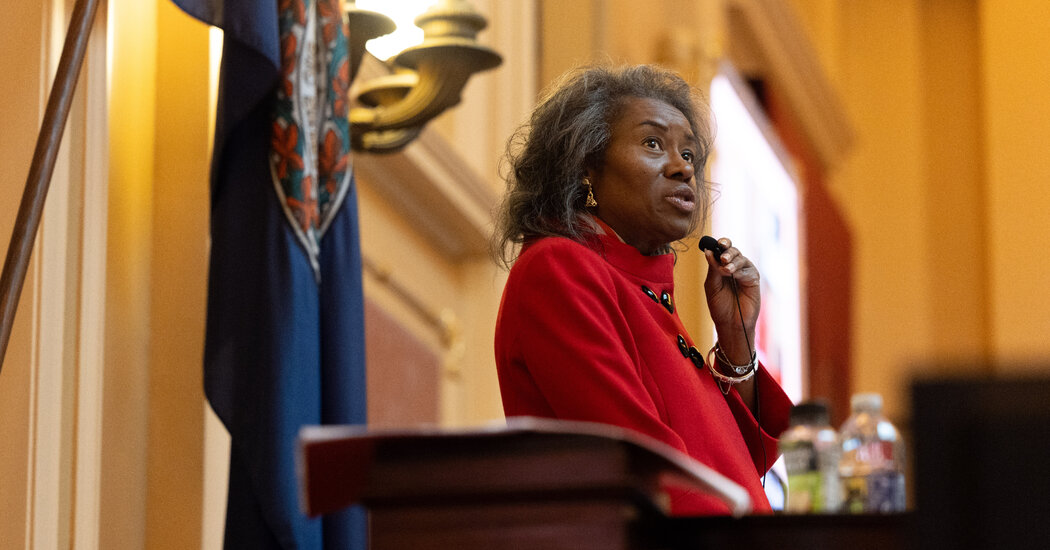The Virginia legislature approved a new constitutional amendment that would allow the legislature, where Democrats control both chambers, to draw new congressional maps for the 2026 midterm elections.
The vote is the first step of a lengthy process required to amend the state constitution. But if successful, a new map could give Democrats in Virginia two or three more seats in Congress, and with similar efforts in Illinois and California, would bolster a Democratic front in a nationwide battle of gerrymandering.
The flurry of redistricting efforts began in the spring, when President Trump urged Republican states to redraw maps to their advantage. Texas, North Carolina and Missouri have already passed new maps while the state legislature in Indiana will be holding a special session for redistricting next week. In Ohio, where lawmakers were required to present a new map under constitutional rules, a deal was approved Friday morning that would give Republicans a chance to pick up two more seats.
This process is complicated in Virginia because of a constitutional amendment, passed by voters five years ago, that set up a bipartisan redistricting commission to draw district maps once every decade. The commission, like similar ones created in other states, was an effort to make redistricting less partisan. But in its first effort, in 2021, the Virginia commission could not agree, leaving the state’s Supreme Court to appoint special masters to draw the maps. These maps were intended to be in place for a decade, until after the next U.S. census.
The new amendment would allow maps to be redrawn sooner if at least one other state had redrawn its maps early, which several states have already done. But it would not eliminate the commission, and it would not mandate new maps; the authority it gives the legislature would expire in 2030.
Constitutional amendments in Virginia must be approved by the legislature twice — once before a statewide election and once after — and then put to a statewide referendum. By holding the vote before the coming Election Day, on Nov. 4, Democrats hope to hold the second vote when the new House of Delegates convenes in January.
The vote by the State Senate on Friday, which followed approval by the House of Delegates on Wednesday, ended a week of tense and at times combative floor debates, made all the more intense for taking place in the last week of campaigning before Election Day.
The Republican candidate for governor, Winsome Earle-Sears, who is the current lieutenant governor, had to leave the campaign trail to preside over the State Senate. Jason Miyares, the Republican attorney general who is running for re-election, issued an opinion declaring that Democrats’ moves violated “foundational principles of Virginia constitutional law.”
Republican lawmakers have argued that the entire process is invalid on statutory and constitutional grounds, and they have promised a flurry of litigation. G.O.P. leaders have already filed one lawsuit challenging the legislative session itself. But beyond contesting the procedure, Republicans argued in multiple floor speeches this week that the amendment was an affront to the will of Virginia’s voters, who voted by a 2-1 margin for the bipartisan redistricting commission five years ago.
“We are witnessing a deliberate abandonment of principle at the moment that it’s become inconvenient,” said state Senator Bill Stanley, a Republican.
Democrats insisted that voters will have a chance to weigh in on the amendment in a referendum in the spring before any new maps would be drawn. And, they argue, people in Virginia are not isolated from what happens elsewhere in the country.
The proposed amendment “does not undo, or come even close to undoing, the hard won redistricting reforms we fought to achieve,” Schuyler VanValkenburg, a Democratic state senator who was an outspoken proponent of the bipartisan commission, said in a floor speech. “We are taking a truly proportional response to an extreme situation. The current outbreak of opportunistic mid-decade redistricting means that we are in a truly unprecedented constitutional norm-breaking time.”
Ben Paviour contributed reporting.
Campbell Robertson reports for The Times on Delaware, the District of Columbia, Kentucky, Maryland, Ohio, Pennsylvania, Virginia and West Virginia.
The post Virginia Takes First Step Toward New Congressional Maps appeared first on New York Times.




